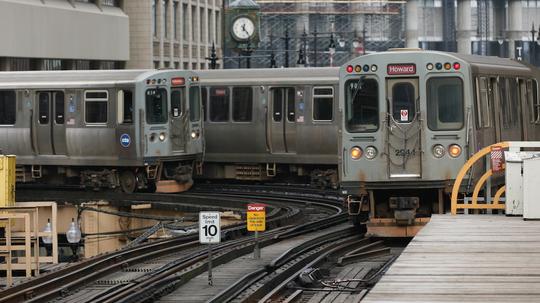
For downtown workers trying to get to their Northside homes at peak rush hour times, usually between 5 and 6 p.m., taking the Red Line can be annoyingly crowded. But when you add a weeknight Cubs game at 7 p.m., and all the added fan traffic that comes with it, trying to take the Red Line north at rush hour can just be nightmare.
But local innovation organization City Digital, Mastercard, the Chicago Transit Authority and ideas42, a New York-based behavioral science organization, are working to ease the Red Line’s congestion using fare rebate incentives. In a pilot program that began in August, CTA fare rebates were shown to shift nearly 18 percent of Red Line traffic on days when a weeknight Cubs game took place.
“CTA is the best way to get home from work as well as to the Cubs games,” said CTA President Dorval R. Carter, Jr., in a statement. “We are always looking for ways to increase convenience for our customers, and this test program allowed us to study ways we can improve customer experience.”
The program allowed regular commuters, who take the Red Line north from downtown at peak commuting times—around 5 to 6 p.m.—to sign up for text alerts that notified them of potentially bigger CTA crowds due to evening Cubs games at Wrigley Field, while suggesting less crowded travel periods.
More than 2,000 CTA commuters signed up to receive the text alerts, which were delivered through a mobile engagement platform at 3 p.m. on game days.
Texts sent from August through October varied on the type of incentive. Some simply notified riders of commuter traffic expectations, while others offered a $2.25-$5 rebate to riders’ Ventra cards or a $5 charitable donation if they avoided peak commuting times.
"At the end of the day, it’s actually all about the people.”
Data showed that fare rebates had the most impact on riders’ decisions to commute at a different time, with average participant ridership dropping 17.5 percent between 5 and 6 p.m. Informational and charitable donation text alerts had less of an impact on riders’ decisions to travel at peak times, but still led to lower ridership during those times overall.
Based on the pilot’s results, the team plans to run similar, but larger experiments in 2018, according to Brenna Berman, executive director of City Digital, who is sharing the pilot’s results at the Smart City Expo World Congress conference in Barcelona, Spain, with the other team members.
“People and the cities where they live are really at the center of the work that we do here at City Digital, so those solutions need to resonate with those people that are making cities their home, or the places that they work or visit,” Berman said in a video about the project. “That’s really our core goal and the goal of our partners. At the end of the day, it’s actually all about the people.”








